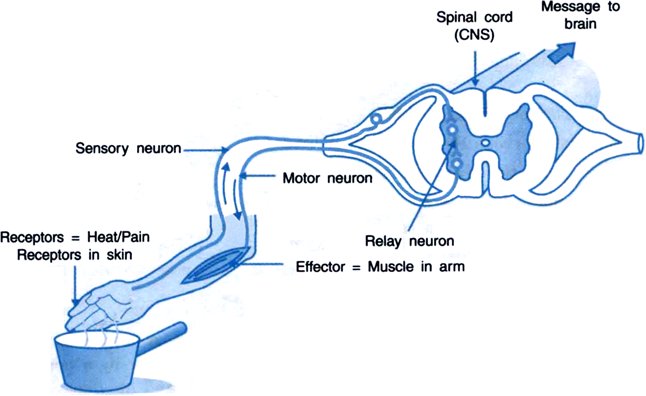Pathway of the reflex action: Suppose a pin is pricked suddenly in the foot. This stimulus received by the receptor organs (skin of the foot) stimulates and sensory fibre (afferent fibre) of the area. The nerve fibre carries the stimulus to the spinal cord through the dorsal root of a spinal nerve. Now form the spinal cord the impulse is passed to one or more motor (efferent) nerve fibres through the ventral root of the spinal cord. The motor nerve fibres stimulate the effector organ (muscles of the root) or organs to an activity so as to deal suitably with the stimulus. In this case pin pricking the portion of the body i.e., foot is immediately lifted.
Fig. A typical reflex reaction, stepping on a nail initiates a three neuron reflex

Thinking tissue: The thinking tissue in our body consists of dense networks of intricately arranged neurons.
Location: Thinking tissue is located in the forward end of the skull
Function: It receives signals from all over the body. It has regions which receive sensory impulses from various receptors. It has separate areas where information is interpreted considering the information that is already stored in the brain. From this part of the brain, nerves carry signals back to different parts of the body to act upon muscles/glands accordingly.
The overall function of human brain are:
(i) to receive impulses from all the sensory organs like eye, ear, nose, tongue, skin.
(ii) sending of responses to muscles and glands for proper actions.
(iii) control and coordination of body activities.
(iv) thinking, storage of past knowledge and experiences, feeling of consciousness and modification of behaviour according to situation and experience.
